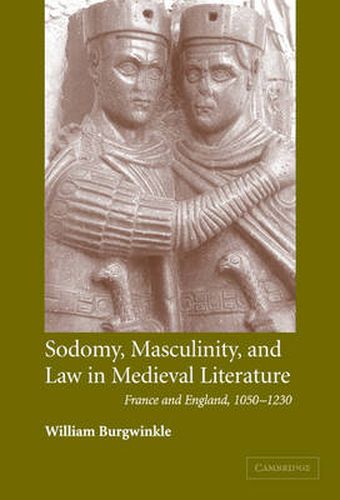Readings Newsletter
Become a Readings Member to make your shopping experience even easier.
Sign in or sign up for free!
You’re not far away from qualifying for FREE standard shipping within Australia
You’ve qualified for FREE standard shipping within Australia
The cart is loading…






William Burgwinkle surveys poetry and letters, histories and literary fiction - including Grail romances - to offer a historical survey of attitudes towards same-sex love during the centuries that gave us the Plantagenet court of Henry II and Eleanor of Aquitaine, courtly love, and Arthurian lore. Burgwinkle illustrates how ‘sodomy’ becomes a problematic feature of narratives of romance and knighthood. Most texts of the period denounce sodomy and use accusations of sodomitical practice as a way of maintaining a sacrificial climate in which masculine identity is set in opposition to the stigmatised other, for example the foreign, the feminine, and the heretical. What emerges from these readings, however, is that even the most homophobic, masculinist, and normative texts of the period demonstrate an inability or unwillingness to separate the sodomitical from the orthodox. These blurred boundaries allow readers to glimpse alternative, even homoerotic, readings.
$9.00 standard shipping within Australia
FREE standard shipping within Australia for orders over $100.00
Express & International shipping calculated at checkout
William Burgwinkle surveys poetry and letters, histories and literary fiction - including Grail romances - to offer a historical survey of attitudes towards same-sex love during the centuries that gave us the Plantagenet court of Henry II and Eleanor of Aquitaine, courtly love, and Arthurian lore. Burgwinkle illustrates how ‘sodomy’ becomes a problematic feature of narratives of romance and knighthood. Most texts of the period denounce sodomy and use accusations of sodomitical practice as a way of maintaining a sacrificial climate in which masculine identity is set in opposition to the stigmatised other, for example the foreign, the feminine, and the heretical. What emerges from these readings, however, is that even the most homophobic, masculinist, and normative texts of the period demonstrate an inability or unwillingness to separate the sodomitical from the orthodox. These blurred boundaries allow readers to glimpse alternative, even homoerotic, readings.